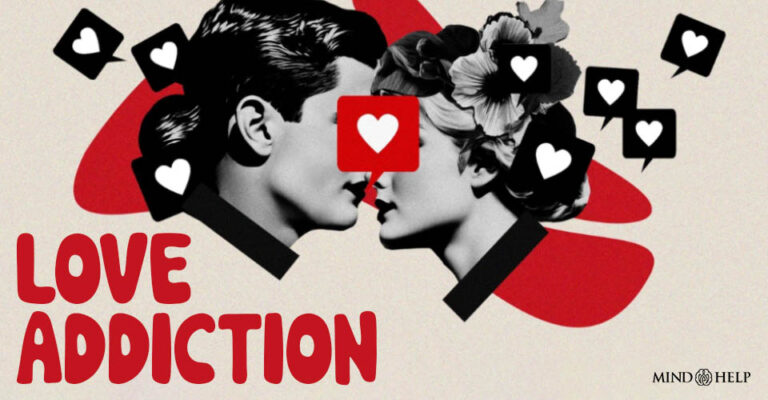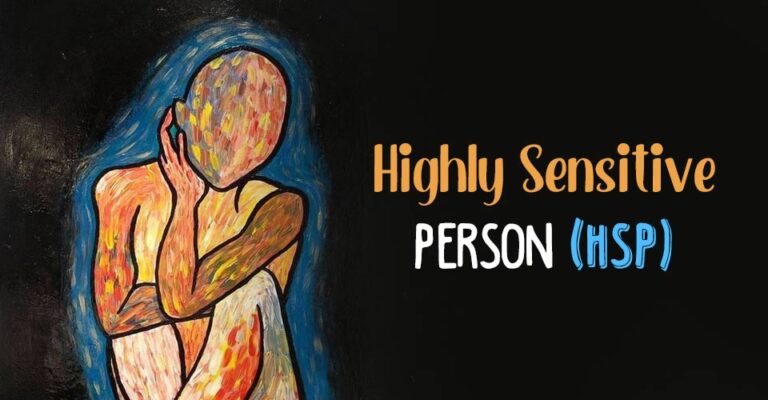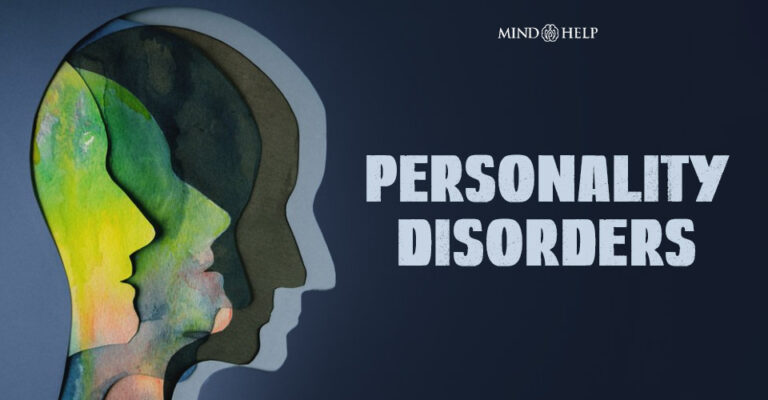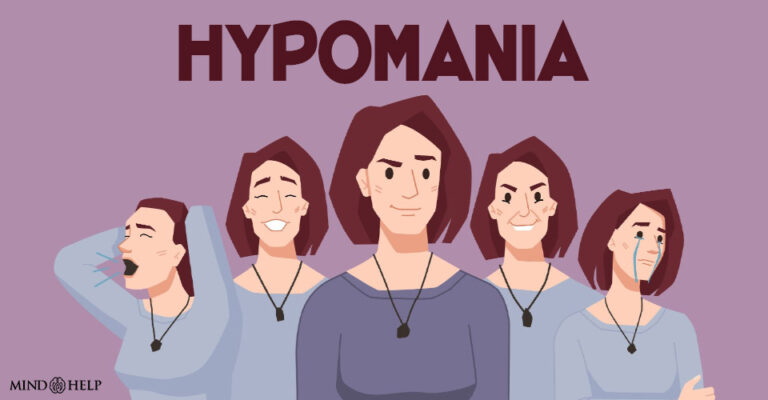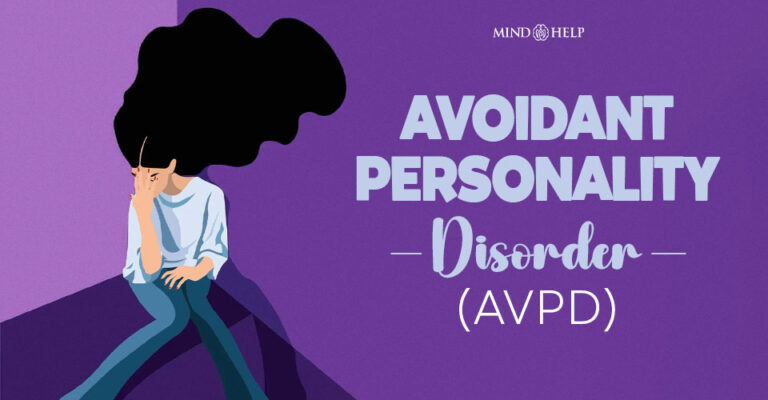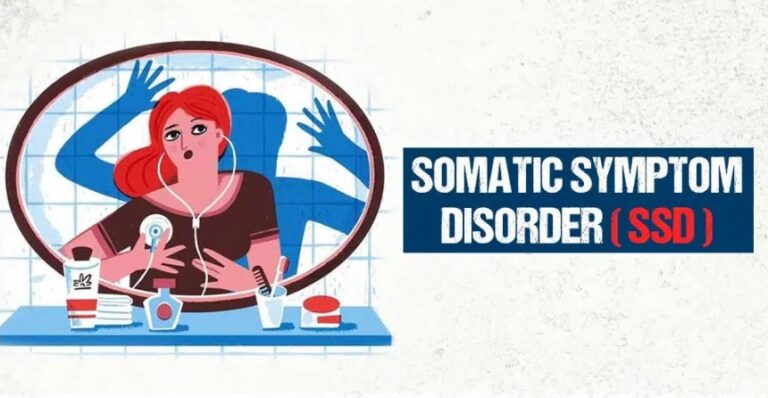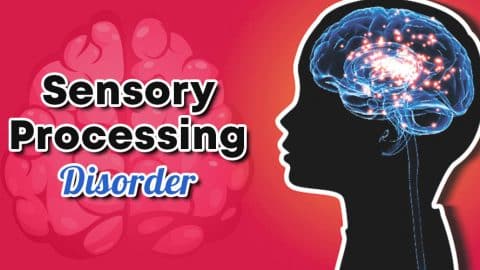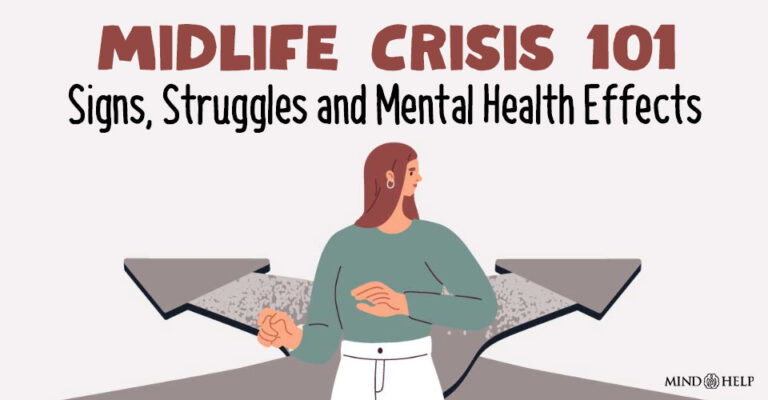Sexual orientation can be defined as an individual’s preference of emotional, romantic, and sexual attraction to people of either male, female, both or any other gender.
What Is Sexual Orientation?
Sexual orientation can be defined as the gender preference to which a person is sexually or romantically attracted. It is the predominant focus of sexual attraction towards people of opposite gender, same gender, both genders or multiple other genders. These orientations are typically categorized under heterosexuality, homosexuality, and bisexuality, while there may be other forms of such orientations such as asexuality, which is a low desire for sexual activity or a lack of sexual attraction towards others.
According to a 2015 study 1 Moleiro, C., & Pinto, N. (2015). Sexual orientation and gender identity: review of concepts, controversies and their relation to psychopathology classification systems. Frontiers in psychology, 6, 1511. https://doi.org/10.3389/fpsyg.2015.01511 , “Sexual orientation refers to the sex of those to whom one is sexually and romantically attracted.” Although different terms like gay, lesbian, bisexual and others, are used to identify people attracted to members of the same sex or both sexes, “sexual orientation does not always appear in such definable categories and, instead, occurs on a continuum and people perceived or described by others as LGB may identify in various ways.”
The adolescence phase 2 Austin, S. B., Conron, K., Patel, A., & Freedner, N. (2007). Making sense of sexual orientation measures: findings from a cognitive processing study with adolescents on health survey questions. Journal of LGBT health research, 3(1), 55–65. https://doi.org/10.1300/j463v03n01_07 is the beginning of sexual attraction. This phase involves changes in the mind and body. A person may feel arousal by thinking about someone they are attracted to. Gender identity, a personal sense of one’s own gender, is widely believed to be closely related to sexual orientation. However, a 2018 study 3 Roselli C. E. (2018). Neurobiology of gender identity and sexual orientation. Journal of neuroendocrinology, 30(7), e12562. https://doi.org/10.1111/jne.12562 pointed out that sexual identity and sexual orientation are independent components of a person’s sexual identity.
It is also shown that there is a significant biological contribution to the development of an individual’s sexual identity and orientation. Research 4 Ngun, T. C., & Vilain, E. (2014). The biological basis of human sexual orientation: is there a role for epigenetics?. Advances in genetics, 86, 167–184. https://doi.org/10.1016/B978-0-12-800222-3.00008-5 shows that there may be genetic and epigenetic explanations for sexual orientations. A person may express their behaviors, attitudes, and appearances with their assigned sex at birth. It may differ if an individual chooses to behave in a different way no matter what their gender may be. Gender identity is usually formed by the age of three. After this age, it is extremely difficult to change your identity.
Most people are comfortable with their own gender and desire sexual contact with the opposite gender. However there are a group of people that never fit into the set societal standards of sexuality.
Types Of Sexual Orientation
There are several types of sexual orientation. The primary categories include the following:
1. Heterosexual
Heterosexual people are romantically and sexually attracted to the opposite sex. They are also called “straight”
2. Homosexual
Homosexual people are romantically and sexually attracted to the same sex. Homosexual males are often known as “gay” whereas homosexual females are known as “lesbians”
Read More About Homosexuality Here
3. Bisexual
Bisexual people are romantically and sexually attracted to both sexes i.e male and female.
4. Asexual
Asexual people are not romantically and sexually attracted to any sexes.
Apart from these four main types, there may be many other forms of sexuality.
Causes Of Sexual Orientation
The exact cause of sexual orientation is still unknown. Experts believe that sexual orientation is influenced by a combination of environmental, emotional, hormonal, and biological factors. It is essential to keep in mind that being bisexual or homosexual is not a form of mental illness. Sexual orientation is not something a person can voluntarily choose. It is a natural process of understanding who a person is. Some of the factors influencing sexual orientation are as follows:
1. Preferences
Research 5 Cook, C. C. (2020). The causes of human sexual orientation. Theology & Sexuality, 27(1), 1-19. https://doi.org/10.1080/13558358.2020.1818541 suggests that men experience more category-specific attraction or arousal than women. Thus, homosexual men are attracted to other men while heterosexual men are attracted to women. However, for women, attraction and arousal appear to be less specific.
For instance, heterosexual women may display arousal in response to both male and female stimuli. A 2004 study 6 Bullough V. L. (2004). Sex will never be the same: the contributions of Alfred C. Kinsey. Archives of sexual behavior, 33(3), 277–286. https://doi.org/10.1023/B:ASEB.0000026627.24993.03 also pointed out that women experience changes in sexual orientation over the course of their lifetime and their experiences are more malleable and context dependent than men’s.
2. Genetic and Biological Factors
Research 7 O’Hanlan, K. A., Gordon, J. C., & Sullivan, M. W. (2018). Biological origins of sexual orientation and gender identity: Impact on health. Gynecologic oncology, 149(1), 33–42. https://doi.org/10.1016/j.ygyno.2017.11.014 shows that sexual orientation and gender identity may have biological origins. Twin studies 8 Sahu, M., & Prasuna, J. G. (2016). Twin Studies: A Unique Epidemiological Tool. Indian journal of community medicine : official publication of Indian Association of Preventive & Social Medicine, 41(3), 177–182. https://doi.org/10.4103/0970-0218.183593 suggest that there may be a genetic component involved in sexual orientation. These analyses 9 Burri, A., Spector, T., & Rahman, Q. (2015). Common genetic factors among sexual orientation, gender nonconformity, and number of sex partners in female twins: implications for the evolution of homosexuality. The journal of sexual medicine, 12(4), 1004–1011. https://doi.org/10.1111/jsm.12847 suggest that sexual orientation in homosexual people is 32% due to genetic factors, 25% due to family environment, and 43% due to a specific environment.
3. Environmental Factors
There is no evidence that suggests parenting or early childhood experiences influence sexual orientation. A 2000 study 10 Bailey, J. M., Dunne, M. P., & Martin, N. G. (2000). Genetic and environmental influences on sexual orientation and its correlates in an Australian twin sample. Journal of personality and social psychology, 78(3), 524–536. https://doi.org/10.1037//0022-3514.78.3.524 pointed out that men and women differed in their distributions of sexual orientation, with women more likely to have slight-to-moderate degrees of homosexual attraction, and men more likely to have high degrees of homosexual attraction.
Mental Health And Sexual Orientation
Experiences of discrimination and stigmatization can place the LGBTQ (lesbian, gay, bisexual, transgender, queer & questioning) community at a higher risk for mental distress. A 2014 study 11 Bostwick, W. B., Boyd, C. J., Hughes, T. L., West, B. T., & McCabe, S. E. (2014). Discrimination and mental health among lesbian, gay, and bisexual adults in the United States. The American journal of orthopsychiatry, 84(1), 35–45. https://doi.org/10.1037/h0098851 pointed out that lesbian, gay, bisexual, and transgender people often suffer from various discrimination, stigma, and social exclusion- including physical and psychological abuse, bullying, persecution, or economic alienation.
Another 2006 study 12 Milburn, N. G., Ayala, G., Rice, E., Batterham, P., & Rotheram-Borus, M. J. (2006). Discrimination and exiting homelessness among homeless adolescents. Cultural diversity & ethnic minority psychology, 12(4), 658–672. https://doi.org/10.1037/1099-9809.12.4.658 also found that experiences of discrimination may occur in various areas of life such as employment, education, health care, and interpersonal relationship. “Peer victimization related to sexual orientation and gender identity or expression is also associated with disruptions in educational trajectories, traumatic stress, and alcohol and substance use,” explain researchers 13 Collier, K. L., van Beusekom, G., Bos, H. M., & Sandfort, T. G. (2013). Sexual orientation and gender identity/expression related peer victimization in adolescence: a systematic review of associated psychosocial and health outcomes. Journal of sex research, 50(3-4), 299–317. https://doi.org/10.1080/00224499.2012.750639 . One 2013 study 14 Mustanski, B., & Liu, R. T. (2013). A longitudinal study of predictors of suicide attempts among lesbian, gay, bisexual, and transgender youth. Archives of sexual behavior, 42(3), 437–448. https://doi.org/10.1007/s10508-012-0013-9 even pointed out that the LGB population may be at an increased risk for depression and suicidal behavior.
Some of the other mental health conditions experienced due to sexual orientation are:
- Traumatic stress reactions 15 Mustanski, B., Newcomb, M., & Garofalo, R. (2011). Mental health of lesbian, gay, and bisexual youth: A developmental resiliency perspective. Journal of gay & lesbian social services, 23(2), 204–225. https://doi.org/10.1080/10538720.2011.561474
- Major depressive disorder 16 Cochran, S. D., & Mays, V. M. (2000). Relation between psychiatric syndromes and behaviorally defined sexual orientation in a sample of the US population. American journal of epidemiology, 151(5), 516–523. https://doi.org/10.1093/oxfordjournals.aje.a010238
- Generalized anxiety disorder 17 Bostwick, W. B., Boyd, C. J., Hughes, T. L., & McCabe, S. E. (2010). Dimensions of sexual orientation and the prevalence of mood and anxiety disorders in the United States. American journal of public health, 100(3), 468–475. https://doi.org/10.2105/AJPH.2008.152942
- Substance abuse 18 King, M., Semlyen, J., Tai, S. S., Killaspy, H., Osborn, D., Popelyuk, D., & Nazareth, I. (2008). A systematic review of mental disorder, suicide, and deliberate self harm in lesbian, gay and bisexual people. BMC psychiatry, 8, 70. https://doi.org/10.1186/1471-244X-8-70
- Social phobia 19 Gómez-Gil, E., Trilla, A., Salamero, M., Godás, T., & Valdés, M. (2009). Sociodemographic, clinical, and psychiatric characteristics of transsexuals from Spain. Archives of sexual behavior, 38(3), 378–392. https://doi.org/10.1007/s10508-007-9307-8
- Eating disorders 20 Vocks, S., Stahn, C., Loenser, K., & Legenbauer, T. (2009). Eating and body image disturbances in male-to-female and female-to-male transsexuals. Archives of sexual behavior, 38(3), 364–377. https://doi.org/10.1007/s10508-008-9424-z
The data 21 Maguen, S., & Shipherd, J. C. (2010). Suicide risk among transgender individuals. Psychology and Sexuality, 1(1), 34-43. https://doi.org/10.1080/19419891003634430 for suicidal ideation and attempts found that the percentage of attempted suicide was as high as 40% in transexual men and 20% in transexual women.
Read More About Major Depressive Disorder ( Depression ) Here
How To Identify Sexual Orientation
Understanding one’s sexual orientation can be challenging. For some people, it may even take years to understand it. However, it is important to keep in mind that no sexual orientation is wrong. Many people are often found to explore who they are interested in. Many people also found in the latter part of their life that their sexual orientation was not what they were interested in.
Most people become aware of their sexual preferences in their pre-teen and teen years. These experiences don’t necessarily mean that they will be attracted to someone of the same gender as an adult. Experts also believe that sexual orientation may also change through the course of an individual’s life.
The Process Of Coming Out
Coming out can be defined as the process where a person of the LGBTQ community accepts their sexual orientation and declares it openly to other people. A 2016 study 22 Cooper, K. M., & Brownell, S. E. (2016). Coming Out in Class: Challenges and Benefits of Active Learning in a Biology Classroom for LGBTQIA Students. CBE life sciences education, 15(3), ar37. https://doi.org/10.1187/cbe.16-01-0074 explains it as “voluntarily making one’s sexual identity or gender identity known to others.” It is an extremely personal experience that involves a range of emotions such as anxiety, stress, frustration, elation or relief. Coming out as lesbian, gay, and bisexual (LGB) can be a significant “psychological decision and hurdle due to both perceived fears and actual negative consequences,” for adolescents and young adults according to researchers 23 Heatherington, L., & Lavner, J. A. (2008). Coming to terms with coming out: review and recommendations for family systems-focused research. Journal of family psychology : JFP : journal of the Division of Family Psychology of the American Psychological Association (Division 43), 22(3), 329–343. https://doi.org/10.1037/0893-3200.22.3.329 .
There may be a few steps involved in the coming out process.
Step 1: Admitting to yourself
The first step is to acknowledge and admit your sexual preferences to yourself. This occurs as you recognize and accept your sexual orientation. “Coming out to oneself is recognizing one’s own sexual identity and labeling it, following which the individual may want to tell others about these feelings,” states a 2012 study 24 Kalra G. (2012). A psychiatrist’s role in “coming out” process: context and controversies post-377. Indian journal of psychiatry, 54(1), 69–72. https://doi.org/10.4103/0019-5545.94652 .
Step 2. Telling your friends and family
The coming out process also involves telling your friends and family about your preferences. “Coming out to family members may be particularly difficult,” explains the 2012 study, adding “Weak family relations significantly detract an individual from coming out to family members including parents.” However, it is important to understand that you do not owe any explanation and you do not need to tell everyone you know.
Coming out is not a one-time thing. Since most people are heterosexual, a person of the LGBTQ community may have to come out every time they encounter a situation that requires them to talk about their preferences. Coming out is completely dependent on the individual. They have to decide whether they wish to tell others about their preferences.
A 2016 study 25 Russell, S. T., & Fish, J. N. (2016). Mental Health in Lesbian, Gay, Bisexual, and Transgender (LGBT) Youth. Annual review of clinical psychology, 12, 465–487. https://doi.org/10.1146/annurev-clinpsy-021815-093153 explains that coming out can have positive effects for adult, while for youths it may lead to discrimination and victimization. “Coming out is typically stressful for LGBT youth but is also associated with positive mental health, especially over the long run,” adds the study. Therapists and psychiatrists can also facilitate the process of coming out for LGBTQ inidviduals.
Efforts To Change Sexual Orientation
Conversion therapy 26 Drescher, J., Schwartz, A., Casoy, F., McIntosh, C. A., Hurley, B., Ashley, K., Barber, M., Goldenberg, D., Herbert, S. E., Lothwell, L. E., Mattson, M. R., McAfee, S. G., Pula, J., Rosario, V., & Tompkins, D. A. (2016). The Growing Regulation of Conversion Therapy. Journal of medical regulation, 102(2), 7–12. , a pseudoscientific practice, is a dangerous practice targeted towards the LGBTQ community. These are discredited practices that falsely claim to change a person’s sexual orientation. A 2013 study 27 Fjelstrom J. (2013). Sexual orientation change efforts and the search for authenticity. Journal of homosexuality, 60(6), 801–827. https://doi.org/10.1080/00918369.2013.774830 attempted to understand the authenticity of these practices. The research concluded that participants sometimes identified as heterosexual during the therapy, but never changed their underlying homosexual orientation.
They also pointed out that suppression, disconnection, and a sense of inauthenticity were significant phenomena of this process. Conversion therapy may even lead to depression, anxiety, drug abuse, and suicide. Some right-wing religious groups also believe that an individual’s sexual orientation can be changed through prayer or these conversions or reparative therapy. Research shows that such efforts have disproven their efficacy and indicated that they are detrimental to their well-being.
Societal Aspect Of Sexual Orientation
Sociodemographic characteristics such as gender, race, or class are linked to personal experiences, social status, and shared group identities and interests. These determine how people approach social and political life. Studies 28 Balsam, K. F., Rothblum, E. D., & Beauchaine, T. P. (2005). Victimization over the life span: a comparison of lesbian, gay, bisexual, and heterosexual siblings. Journal of consulting and clinical psychology, 73(3), 477–487. https://doi.org/10.1037/0022-006X.73.3.477 have found greater frequencies of victimization among LGB youth compared to heterosexual siblings.
Due to this, there are several negative effects such as self-esteem and mental health issues. Due to the negative effects of victimization and social influence, social support from family and friends are of utmost importance for emotional support and resilience. For instance, a 1999 study 29 Hodges, E. V., Boivin, M., Vitaro, F., & Bukowski, W. M. (1999). The power of friendship: protection against an escalating cycle of peer victimization. Developmental psychology, 35(1), 94–101. https://doi.org/10.1037//0012-1649.35.1.94 found that mutual best friendship can provide a buffer against the negative outcomes of victimization.
Many people may even presume to identify another person’s sexual orientation based on appearance, clothing, tone of voice, mannerisms and behavior around other people. Perceived sexual orientation may influence a person’s behavior. For instance, a 2004 report found that 15.6% of hate crimes were because of a sexual orientation bias. Several efforts are being made across countries to curb this issue wherein laws and legislations are being passed to promote equality.
Coping With Stress Due To Sexual Orientation
Although stress is a normal part of life, understanding one’s sexual orientation can pose a lot of stress on the individual. If someone is not a heterosexual person, they may undergo a lot of stress due to the discrimination and injustice towards the LGBTQ community. Some of the other factors that may also cause further stress may include rejection, prejudice, fear, and confusion.
A 1993 study 30 Lazarus R. S. (1993). Coping theory and research: past, present, and future. Psychosomatic medicine, 55(3), 234–247. https://doi.org/10.1097/00006842-199305000-00002 suggested that some youth use escape strategies in order to cope with their stress. These escape strategies may also include avoidance, withdrawal, and denial. Excessive stress may also have physical effects such as headaches, back pain, or insomnia. Hence, it is essential to learn stress management techniques to ensure the mental and physical well being of the individual. Some of the ways to cope with stress are as follows:
- Taking care of yourself
- Following a healthy diet
- Avoid alcohol and drugs
- Seek help from a professional
- Regular exercise
- Connect with people who are supportive
- Get enough sleep
- Practice mindfulness activities
- Join a support group
A 2009 study 31 Sandfort, T. G., Bakker, F., Schellevis, F., & Vanwesenbeeck, I. (2009). Coping styles as mediator of sexual orientation-related health differences. Archives of sexual behavior, 38(2), 253–263. https://doi.org/10.1007/s10508-007-9233-9 of adults found that gay men and bisexual men utilized emotion-oriented and avoidance coping strategies more often than heterosexual men. Hence, it is crucial to address the built-up stress and find healthy coping strategies to lead a happy and healthy life.
Changing Beliefs About Sexual Orientation
Over time people have become more accepting towards the LGBTQ community. Laws have been passed to legitimize same-sex marriages and bring equality among all communities. It is essential to keep an open mind and understand that we don’t always choose who we fall in love with. Although most people aren’t comfortable with the idea of sexual orientation differences, being more accepting can go a long way to change the prevalent beliefs.
Sexual Orientation At A Glance
- Sexual orientation can be defined as the gender preference to which a person is sexually or romantically attracted.
- Experts believe that sexual orientation is influenced by a combination of environmental, emotional, hormonal, and biological factors.
- Understanding one’s sexual orientation can be challenging.
- Coming out can be defined as the process where a person of the LGBTQ+ community accepts their sexual orientation and declares it openly to other people.
- Over time people have become more accepting towards the LGBTQ+ community

